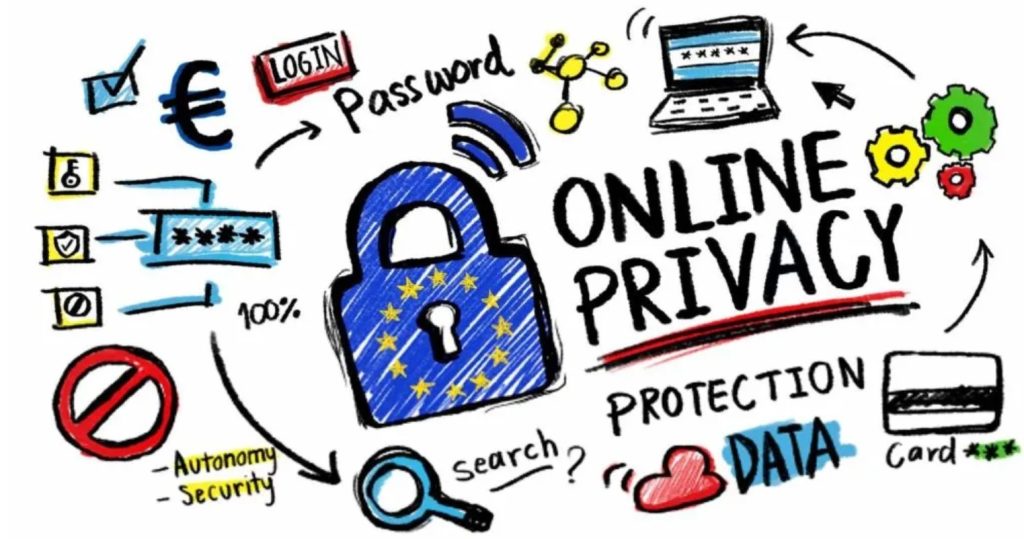
Why Online Privacy Matters.
Here, you can explain the significance of safeguarding personal information:
- Identity Protection: Protecting personal details like full name, date of birth, address, and phone number helps prevent identity theft and fraud.
- Financial Security: Keeping banking and credit card information private reduces the risk of financial exploitation and unauthorized transactions.
- Preventing Surveillance: Individuals should be aware of how companies and advertisers track their online activities to influence behavior and target ads.

Tips for Protecting Online Privacy.
Use Privacy Settings: Encourage users to review and adjust privacy settings on social media platforms and apps. This includes controlling who can see posts, photos, and personal information.
Limit Sharing: Emphasize the importance of being cautious about sharing personal information online, especially on public forums and social media.
Secure Your Devices: Explain the importance of enabling device encryption, using strong passwords, and installing security software to protect against unauthorized access.
Data Protection Laws and Rights.
- GDPR (General Data Protection Regulation): Provide an overview of GDPR and similar data protection laws that regulate how organizations collect, store, and use personal data.
- Individual Rights: Educate users about their rights under these laws, such as the right to access, correct, and request deletion of their personal data.
Recognizing and Avoiding Online Scams
Phishing
Phishing is a type of cyber attack where attackers impersonate legitimate entities (like banks, businesses, or government agencies) to trick individuals into providing sensitive information such as passwords, credit card numbers, or personal details. Here’s how to recognize and avoid phishing scams:
- Look for Signs of Phishing: Scrutinize emails and messages for suspicious elements like unexpected requests for personal information, urgent language, or generic greetings (e.g., “Dear Customer”).
- Verify Sender Information: Check the sender’s email address or contact details. Legitimate organizations typically use official domain names.
- Avoid Clicking Links: Avoid clicking on links or downloading attachments from unsolicited emails or messages. Hover over links to see the actual URL before clicking.
- Use Two-Factor Authentication (2FA): Enable 2FA wherever possible to add an extra layer of security against phishing attacks.
Lorem ipsum dolor sit amet, consectetur adipiscing elit. Ut elit tellus, luctus nec ullamcorper mattis, pulvinar dapibus leo.
Fake Websites.
Fake websites are designed to mimic legitimate websites to deceive users into entering personal or financial information. Here’s how to identify and avoid fake websites:
- Check URL: Carefully examine the website’s URL for typos, extra characters, or unusual domain extensions (.net instead of .com, for example).
- Look for HTTPS: Legitimate websites use HTTPS (with a padlock icon) to secure data transmission. Avoid entering sensitive information on websites without HTTPS.
- Verify Website Identity: Always verify the legitimacy of websites by cross-checking with official sources or contacting the organization directly.

